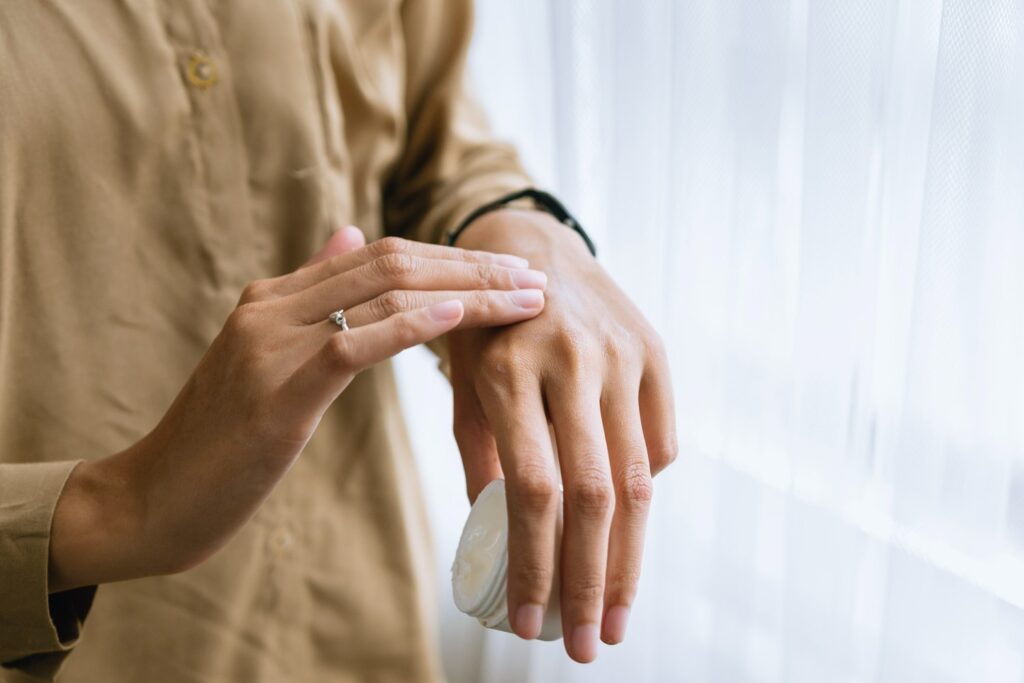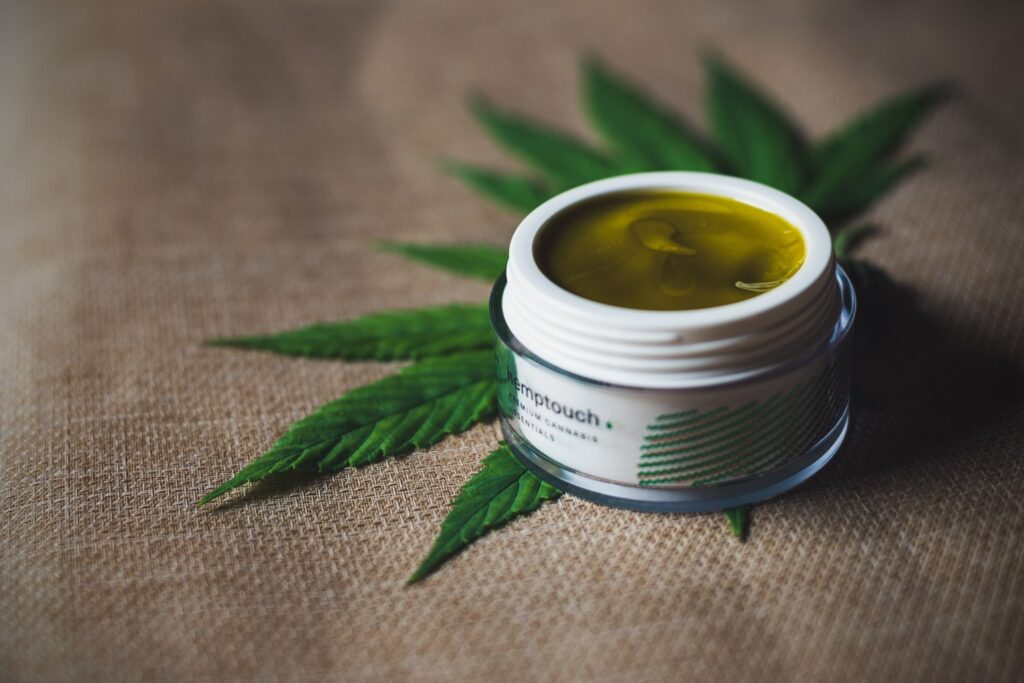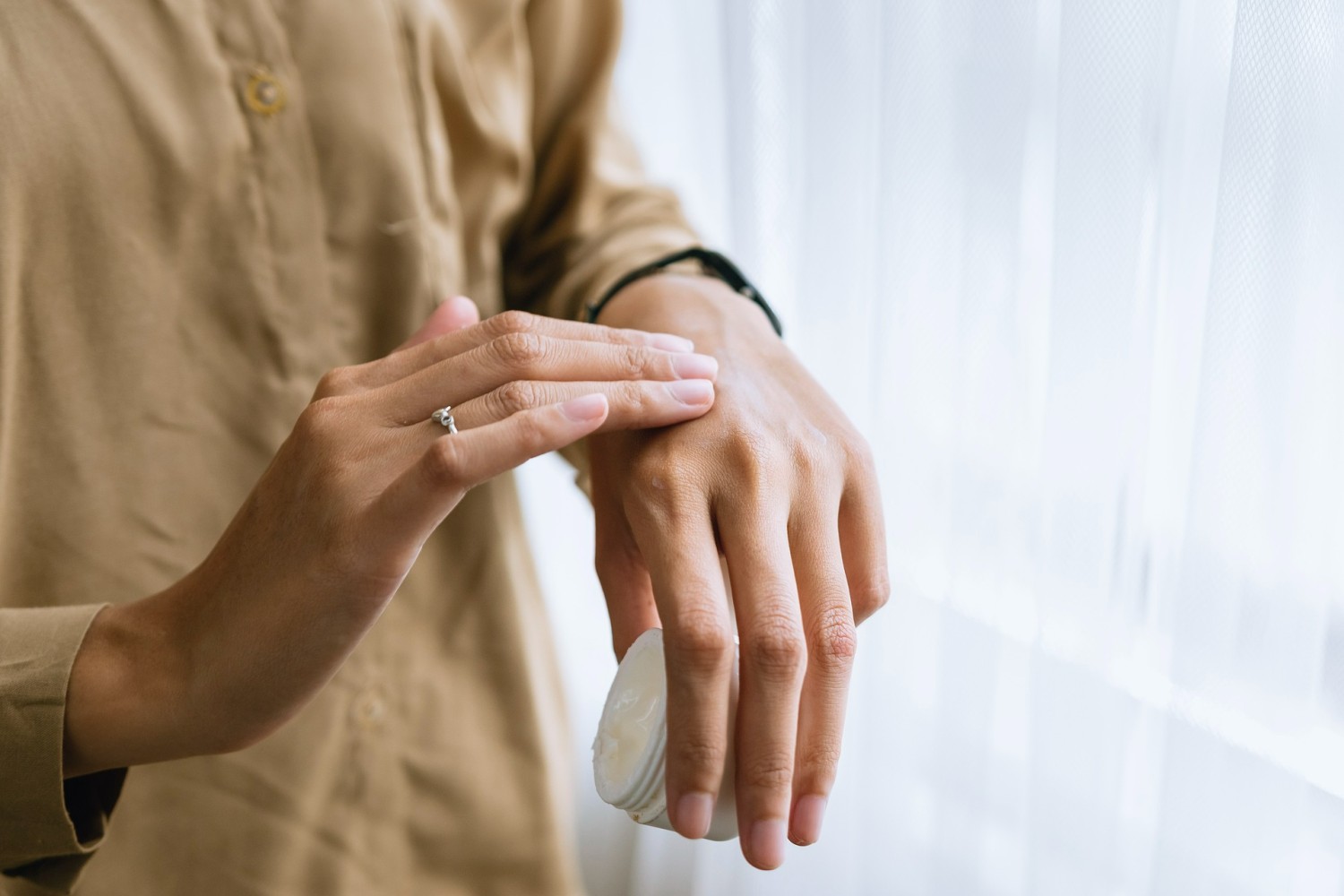
If you’ve spent any time searching online or in stores for cannabis products, you’ve probably noticed an increasing number of topicals on the shelves. Cannabis topicals might not seem as exciting as a high-THC preroll or edible, but these products offer some unique benefits that are worth knowing about.
Whether you’re a cannabis lover or abstainer, you might want to take a closer look at the wonders of topical cannabis.
Contents
What Are Cannabis Topicals?
A cannabis topical is any cannabinoid-infused product that’s applied directly to the skin. Most topicals are infused with THC and/or CBD (the two most abundant compounds in cannabis), but some newer topicals are also incorporating minor cannabinoids like CBG, CBN, and THCV.
Some of the most common topical cannabis preparations include lotions, creams, salves, sprays, and ointments. Other types of cannabis topicals include:
- Soothing body oils
- Bath bombs
- Sexual lubricants
- Transdermal patches
New types of topicals are hitting the market every day, and their popularity is soaring.
How Do Cannabis Topicals Work?
Although the process is different from smoking, vaping, or eating cannabis products, the mechanisms are roughly the same. It’s all about influencing the body’s endocannabinoid system, the network of internal receptors that bind to the active compounds in cannabis.
The body’s most prominent cannabinoid receptors, CB1 and CB2, are abundant in certain types of skin cells—including sebocytes, keratinocytes, and immune cells. As cannabinoids come into contact with these receptors, a number of different interactions occur. Some cannabinoids bind directly to the receptors, while others simply influence their activity in the body.
CB1 and CB2 both play a central role in maintaining healthy cellular activity in the skin. The topical application of cannabinoids may help to activate these receptors when the skin is plagued with inflammation, out-of-control sebum production, dryness, or other common conditions.
Using Topical Cannabis
Cannabis topicals are applied directly to the skin, where they penetrate from the epidermis to the dermis layer and go to work.
The main consideration is how much of the product to use. In many of the studies referenced below, subjects were given a topical solution twice a day. This is a good general guideline to follow, but it’s best to use all products as directed by the manufacturer or your healthcare provider.
Although marijuana side effects are rare with topicals, adverse reactions can occur. The most common side effects are redness, itching, rashes, and irritation at the application site. This is often related to an allergic reaction or overuse. Cannabis topicals may also interact with certain drugs, so talk to your doctor first if you’re using any prescription medications.
Related Article: How to Use Cannabis Concentrates
The Benefits of Cannabis Topicals

Cannabis topicals are non-psychoactive. In other words, you won’t get high from using them. Whereas other cannabis products bind to cannabinoid receptors in the bloodstream, topicals bind to localized receptors on the skin. As such, they don’t penetrate deeply enough to give you that classic cannabis buzz. Instead, they work to rejuvenate skin and provide other external benefits.
A few studies have examined the effects of topical cannabis, and the results have been promising so far. One clinical review from 2004 examined several available studies and broke down some of the more noteworthy findings.
Acne
Cannabis topicals may be able to help acne users control breakouts. In one single-blind study, acne sufferers were given a topical cannabis seed extract twice a day for 12 weeks. The treatment was found to be effective in reducing sebum production and acne breakouts.
Wound Healing
The body’s endocannabinoid system plays a pivotal role in helping wounds to heal. The CB2 receptor is especially important in this regard. Cannabinoids like THC and CBD influence the behavior of the CB2 receptor inside the body, potentially helping to promote wound healing in certain immune cells.
Dermatitis
Topicals may also benefit people who suffer from contact dermatitis, atopic dermatitis, psoriasis, and similar conditions. The benefit here might be linked to the body’s CB1 receptor. THC binds effectively to the CB1 receptor, but CBD does not. As such, full-spectrum and THC topicals might be far more effective for dermatitis than CBD topicals.
Itching
In one three-week study, cannabis topicals were found to reduce chronic pruritus (itching) by an average of 86%. Thirty-eight percent of subjects saw a complete elimination of itching symptoms, and an additional 52% experienced a significant reduction in itching symptoms.
Dry Skin
CB1 and CB2 activity can influence skin hydration and cellular recovery. Studies have suggested that certain CB1 and CB2 antagonists—like CBD oil—may help to improve skin hydration and repair. Though more research is needed, this could have many wider-reaching implications for cannabis as an anti-aging solution.
Anti-Inflammatory Relief
The anti-inflammatory effects of THC and CBD have long been observed by researchers. As such, more and more athletes, people with arthritis, and other chronic pain sufferers are turning to cannabis topicals for localized relief.
By applying the solution to the precise location of discomfort or inflammation, the sufferer can experience effective targeted relief more quickly.
Other Conditions
This list is in no way meant to be exhaustive. While the above examples represent some of the most common uses of topical cannabis, research is ongoing to ascertain the potential benefits for a range of conditions, from hair loss to vitiligo and even sexual dysfunction. More research is still needed.
Related Article: What Are Cannabis Topicals and How Do They Work?
The Legal Status of Cannabis Topicals

The legal status of cannabis-based topicals and balms will depend on where you live and what type of product you’re using.
The THC Content Matters
The main thing to consider is the amount of THC present in the product. If the product is a CBD topical that contains 0.3% THC or less, it’s legally considered an industrial hemp product and is not regulated like cannabis. You can buy these products in any state where CBD is legal and there are no age restrictions.
CBD products are legal in most states, though there are some nuances to be aware of. In Idaho, for example, full-spectrum CBD products are still illegal—all CBD products must have 0% THC. In most states, however, you won’t have trouble accessing full-spectrum CBD topicals.
It Depends on the State Where You Live
If you live in a state that allows recreational cannabis (like Washington, Colorado, or California), you can purchase full-THC cannabis topicals from any dispensary. Just note that you must be 21 or older to enter dispensaries and purchase cannabis-based products in most states.
If you live in a state that has a medical cannabis program but no recreational cannabis (like Utah, Oklahoma, or Florida), you’ll need a valid medical marijuana card in order to purchase topicals with more than 0.3% THC.
If you live in a state with no medicinal or recreational cannabis (like South Carolina, Wyoming, or Kansas), your options will be limited to CBD-based topicals.
Where to Buy Cannabis Topicals
THC-based topicals can be found in licensed cannabis dispensaries throughout the country. In many places, you can even get these products delivered to your home, which is a huge benefit for buyers who struggle with severe arthritis, limited mobility, chronic pain, or a lack of transportation.
CanEx, for example, offers California cannabis delivery in as little as an hour. We proudly serve customers and patients throughout Southern California, including Los Angeles County, Riverside County, San Bernardino County, and Ventura County. Similar services are available throughout the country (where permitted).
CBD-based topicals are more widely available than THC topicals. You can find CBD topicals in many health and nutrition stores, pharmacies, and even certain specialty grocery stores like Whole Foods.
How to Shop for Cannabis Topicals
Shopping for topicals can get a bit confusing. Some products are entirely CBD-based, while others will have varying cannabinoid ratios like 3:1 CBD:THC, 1:3 CBD:THC, or even 20:1 CBD:THC.
To find the best formula for your needs, it’s important to understand what you’re trying to treat. For instance, CBD is noted for its strong anti-inflammatory response. So if you’re looking to address inflammation, you might start with a topical that contains a higher concentration of CBD and a lower concentration of THC.
THC, on the other hand, has been shown in studies to be effective for muscle spasticity. So if you’re looking to address muscle spasms, you might choose a topical that’s higher in THC. But again, depending on where you live, your options might be limited.
See if Cannabis Topicals Can Work for You
If you’re curious about topical cannabis preparations, the best thing you can do is give them a try. They’re easy to apply, non-psychoactive, and extremely well-tolerated. If you’re looking to address inflammation, restore hydration to your skin, or treat another condition for which topicals are recommended, there are a wide array of products to choose from.
Depending on what you’re looking to treat, you might find that you prefer conventional topicals or other types of cannabis preparations. However, if conventional remedies have let you down, you might find cannabis topicals to be an excellent complement to your daily routine.










